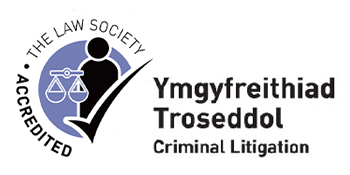STRAIN
A'I GWMNI
AND COMPANY
14A Stryd Penlan, Pwllheli, Gwynedd

Court of Appeal Issues Further Guidance on Sentencing of Young People

Dyddiad: 2023-06-12
The Sentencing of young persons is one of the most complex judicial exercises, which must recognise the substantial differences between child and adult offending, particularly where an offender before the court has just reached majority age.
Research has repeatedly emphasised the pace of developmental milestones and often suggests that full maturity may only be reached after a person is 25 years of age. This challenges the general sentencing orthodoxy, which previously indicated that adults were always fully culpable for their actions.
In a recent case, the Court of Appeal cautioned against simply reaching for an adult sentencing guideline and making an adjustment for age. The court observed that:
“It is critical to note that the suggested resort to the adult guideline comes at the end of the process, not the beginning.”
Preparation is the key to a proper sentencing exercise, and the following modifications are required:
- Court listing should ensure that there is sufficient time for the judge, even if that judge heard the trial and knows the case well, to read and consider all reports and to prepare sentencing remarks in age-appropriate language.
- Consideration should be given to listing separately, and as a priority, the sentence of any child(ren) or young person(s) jointly convicted with adult co-defendants.
- The courtroom should be set up and arranged to ensure that the child or young person to be sentenced is treated appropriately, namely as a vulnerable defendant entitled to proper support. So far as possible the judge should be seated on a level with the child or young person, and the latter should be able to sit near to counsel, with parental or other support seated next to them (see further below).
- Counsel must expect to submit full sentencing notes identifying all relevant Sentencing Council Guidelines, in particular any youth-specific guideline(s), addressing material considerations in an individualistic way for each defendant separately (if more than one young defendant is to be sentenced). Where an individualistic approach is mandated, as it is for a child or young person, a note which addresses all defendants compendiously risks missing important distinctions. These notes should be uploaded well in advance of the sentencing hearing.
- The contents of the Youth Justice Service pre-sentence report and any medical/psychiatric/psychological reports will be key. Courts should consider these reports bearing in mind the general principles at section 1 of the overarching youth guideline, together with any youth-specific offence guideline, carefully working through each.
- In general it will not be helpful to go straight to paragraph 6.46 of the overarching youth guideline without having first directed the court to general principles canvassed earlier in that guideline, as well as to any youth-specific guideline. The stepped approach in the overarching youth guideline and any youth-specific offence guideline should be followed. Working through the guideline(s) in this way will enable the court to arrive at the most appropriate sentence for the particular child or young person, bearing in mind their individual circumstances together with the dual aims of youth sentencing.
- If the court considers that the offence(s) is(are) so serious as to pass the custody threshold, the court must consider whether a YRO with ISS can be imposed instead. If it cannot, then the court must explain why.
Changes to the Criminal Practice Direction, in force from 29 May 2023 also state:
“6.4.2 Where one or more defendants is young or otherwise vulnerable consideration should be given to the following matters:
a. The need to sit in a court in which communication is more readily facilitated.
b. An opportunity for a vulnerable defendant to visit the courtroom, out of court hours, before the hearing so that they can familiarise themselves with it. Where an intermediary is being used to help the defendant communicate, the intermediary should accompany the defendant on any pre-trial visit.
c. If the defendant’s use of the live link is being considered, they should have an opportunity to have a practice session.
d. The opportunity (subject to security arrangements) for a young or otherwise vulnerable defendant to sit with family or other supporting adult in a place which permits easy, informal communication with their legal representatives. This is especially important where vulnerability arises by reason of age. The court should ensure that a suitable supporting adult is available throughout the course of the proceedings.
e. The need to timetable the case to accommodate the defendant’s ability to concentrate.
f. The impact on the non-vulnerable defendants in a multi-handed trial;
g. In the Crown Court, the judge should consider whether robes and wigs should be worn, and should take account of the wishes of both a vulnerable defendant and any vulnerable witnesses.
h. It is generally desirable that those responsible for the security of a vulnerable defendant who is in custody, especially if they are young, should not be in uniform, and that there should be no recognisable police presence in the courtroom save for good reason.
i. Some cases against vulnerable defendants attract widespread public or media interest. In any such case, the assistance of the police should be enlisted to avoid the defendant being exposed to intimidation, vilification or abuse when attending the court. See further the Judicial College Guide on Press Reporting etc.
j. Where appropriate the defence will provide information about the defendant’s welfare. “**
It can be seen from the above that the advocate representing the young person needs to prepare to achieve the best sentencing outcomes.
All of our solicitors are entirely up to date with developments in youth sentencing, and we pride ourselves on ensuring that nothing is left to chance.
How can we help?
We ensure we keep up to date with any changes in legislation and case law so that we are always best placed to advise you properly. If you would like to discuss any aspect of your case, please contact Carys Parry on 01758 455 500 or office@strainandco.co.uk
Image credit: © West Midlands Police
Yn ôl i'r prif dudalen blog.
Mae Ein Arbenigedd yn Cynnwys:
> Anaf Personol
> Cyfraith Teulu
> Trosedd
> Ymgyfreitha Cyffredinol
Gwybodaeth Defnyddiol
> Ariannu a Costau
> Cysylltiadau a Gwybodaeth Pellach
> Cydnabyddiaeth a Cymhwysterau
> Geirda
Cysylltwch â Ni
Cyfeiriad: 14A Stryd Penlan, Pwllheli, Gwynedd
Ffôn: 01758 455500
E-bost: office@strainandco.co.uk

© 2025 Strain a'i Gwmni. Rheolir ac Awdurdodir gan yr SRA rhif 644052. Cedwir Pob Hawl. Rhybudd Preifatrwydd.
Gwefan gan Delwedd.